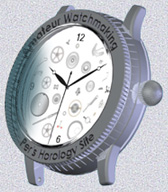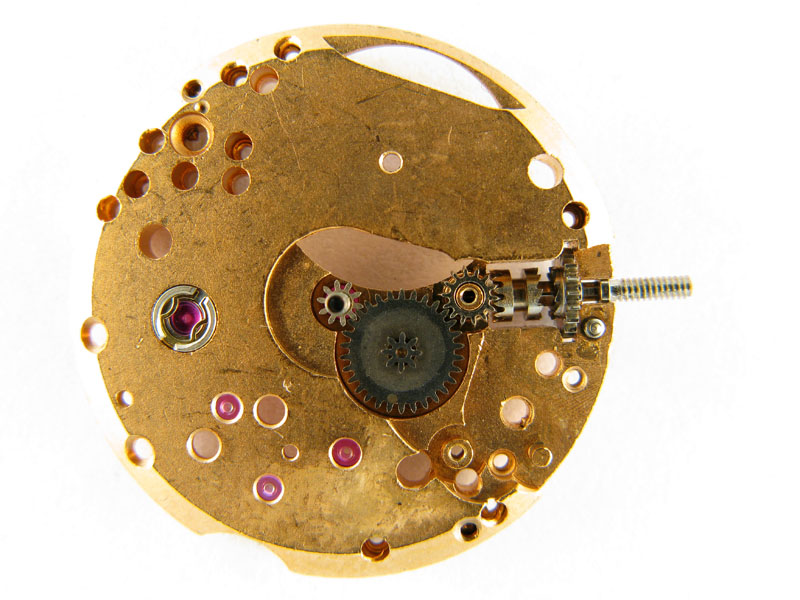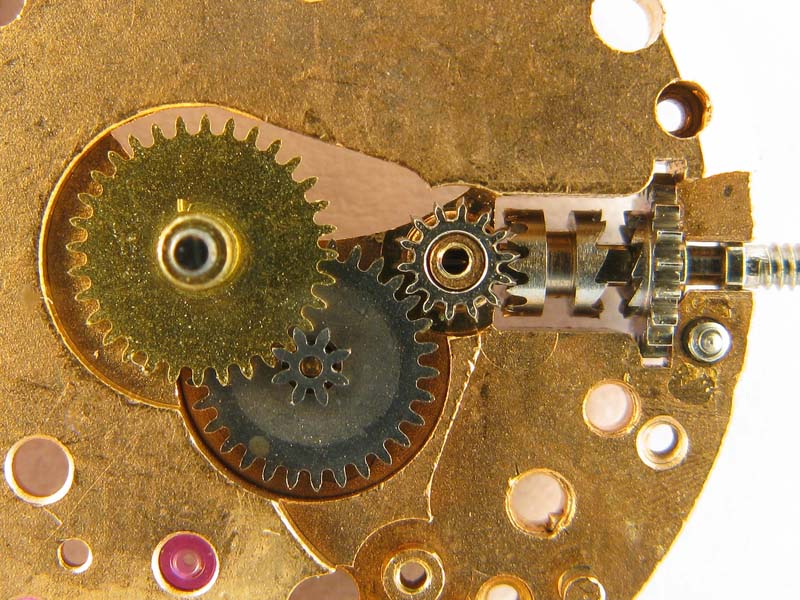
The Motion Works
The motion works has two
roles: the first is
to gear down the speed to the hour hand and
the second is to
allow for setting of the hands to
the correct time.
The hour hand is attached to the Hour Wheel
(250)
arbor. The Center
Wheel (201)
arbor, to which
the minute hand is attached, is fitted through the hollow Cannon
Pinion (240)
tube.

A tube with a pinion is
attached to the Center Wheel arbor,
see center of the
(above) figure.
This tube is called the Cannon Pinion. It is friction fitted to the
Center Wheel arbor and its pinion drives a wheel called the Minute
Wheel, which in turn decelerates
the turning rate of the center wheel to the hour wheel by a factor
of 1:12, giving the Hour Wheel the turning rate of one
revolution in 12
hours.

The hour hand is attached
to the Hour Wheel mounted in place in the figure. The Center Wheel
arbor, to which the minute hand is attached, is fitted through the
hollow Cannon Pinion tube. The Hour Wheel is centered by the Cannon
Pinion but is
not fixed to it. In this way the Cannon Pinion and the Hour Wheel
can rotate around the same center axis but at different speeds.
Turning the winding
button in the set position gives the Setting Wheel a rotation, which
is transferred to the Minute Wheel which causes the hands to move.
In figure you can see how the Clutch Wheel engages the Setting Wheel
in the setting position. When in the winding position the Clutch
Wheel is in the right position and the Setting Wheel is disconnected
and rotates
freely.
Because of the friction
fit of the Cannon Pinion to the Center Wheel arbor, the Minute
Wheel and the Hour Wheel can rotate freely from the gear train when
the hands are set by rotating the Setting Wheel.